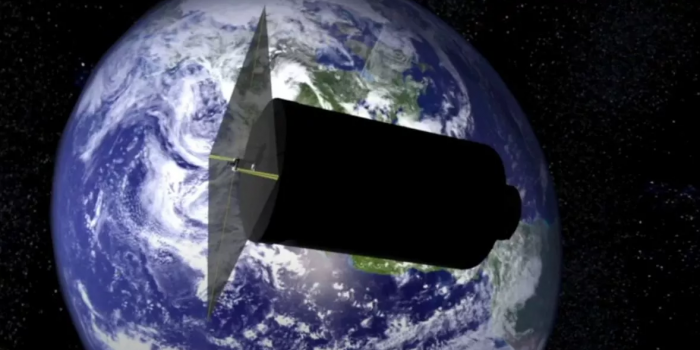An engineering team develops a drag sail device at Purdue University to prevent spacecraft from turning into hazardous junk stuck in Earth’s orbit for years. It aims to pull launch vehicles in space back to Earth and is scheduled to undergo a test launch on 2nd September. It will be tested on a rocket developed by start-up Firefly Aerospace at an altitude of 200 miles (322 km).
Labelled as Spinnaker3, this device is designed to speed up the deorbiting of space junk up to 400 miles (645 km) high to burn up in the Earth’s atmosphere. The test launch will take off from Vandenberg Space Force Base in California, to evaluate how the prototype helps its vehicle deorbit from space after mission completion.

Under the US rules and regulations, within 25 years of operations, satellites shall either be deorbited or sent to a safe cemetery. The conventional technique is to utilise the spacecraft’s thrusters to place it in the disposal orbit. However, in doing so, the satellites’ mass increases, raising expenses and lowering its capacity, with the addition of the fuel needed for the final change in route.
On the other hand, deorbiting technology is a preventive approach without any complex thrusting systems and plumbing. It efficiently manages the growth of space debris essential to the future of safe space exploration. A drag sail tends to capture the stray molecules in the earth’s low orbit and causes the craft to disintegrate until it reaches the atmosphere. Drag sails have been tried previously; however, Spinnaker3 is comparatively better by using three-meter (10-ft) booms to clear a 194-sq-ft (18-sq-foot) fluorinated- polyimide plastic sail. In addition, this sail is sufficient to deorbit a satellite and a rocket at an altitude of about 400 miles.

Scheduled in November, the Spinnaker3 is arranged by Firefly. It is considered one of the seven academic/educational “Dedicated Research and Education Accelerator Mission.” In 15 days instead of 25 days, the sail will be in orbit to deorbit the upper stage of the Alpha rocket from about 200 miles up.
With the support of 18 students along with the faculty at the Purdue Space Flight Projects Laboratory, the new sail has now been built in partnership with Vestigo Aerospace LLC, under a NASA Phase I Small Business Innovation Research prize. Purdue finished field testing at the beginning of this year. Avionics and image systems will also be used to send back pictures from space. San Luis Obispo from California Polytechnic State University helped to provide the equipment.

“Lots of things could deorbit on their own in about a hundred years, but that doesn’t do us any good,” says Arly Black, a Purdue PhD candidate in aeronautics and astronautics, who conducted system testing and performance analysis for Spinnaker3.
“We want to hasten that deorbiting with a drag sail. Taking into consideration predicted atmospheric conditions for November, the Firefly Aerospace launch vehicle could deorbit on its own at a low altitude of about 200 miles within 25 days. Using Spinnaker3, the deorbiting process could shorten to 15 days,” Arly added.
Here’s an animated visual demonstrating the deployment of Spinnaker3.
Source: Purdue University


